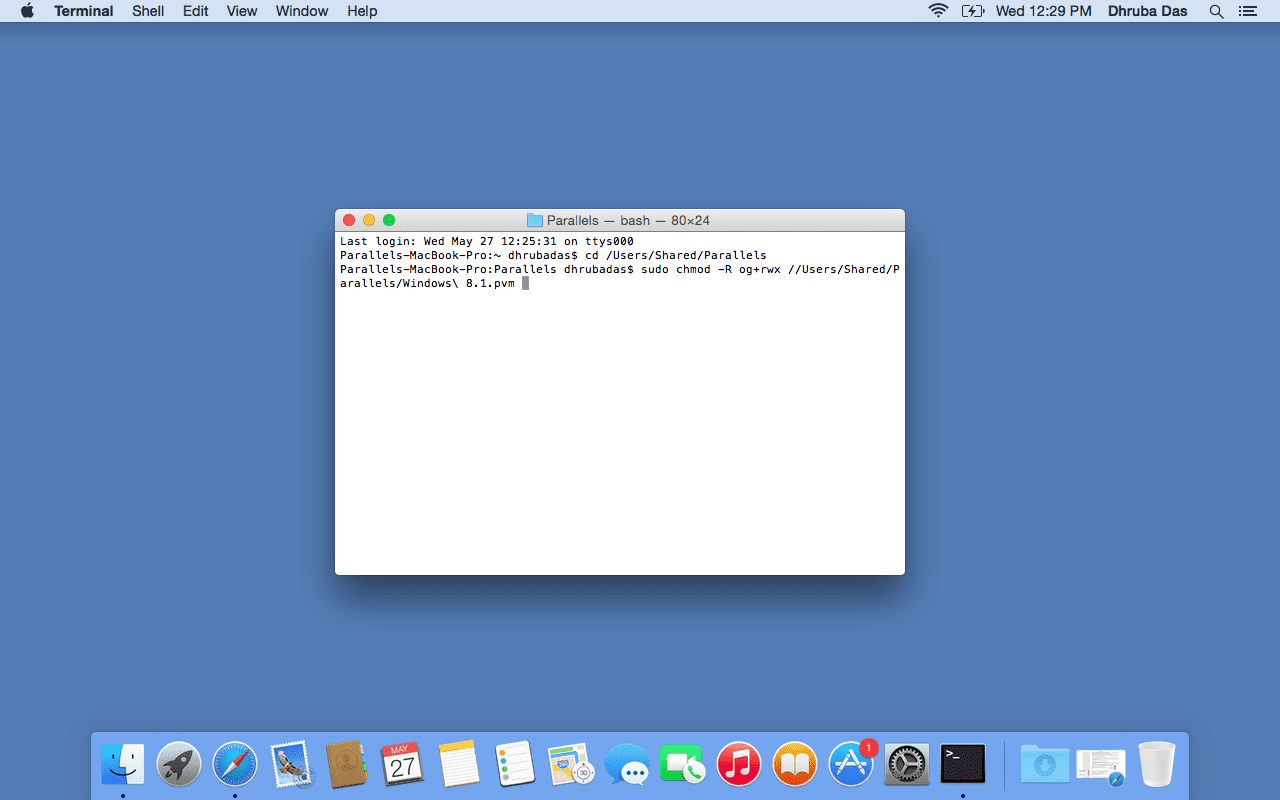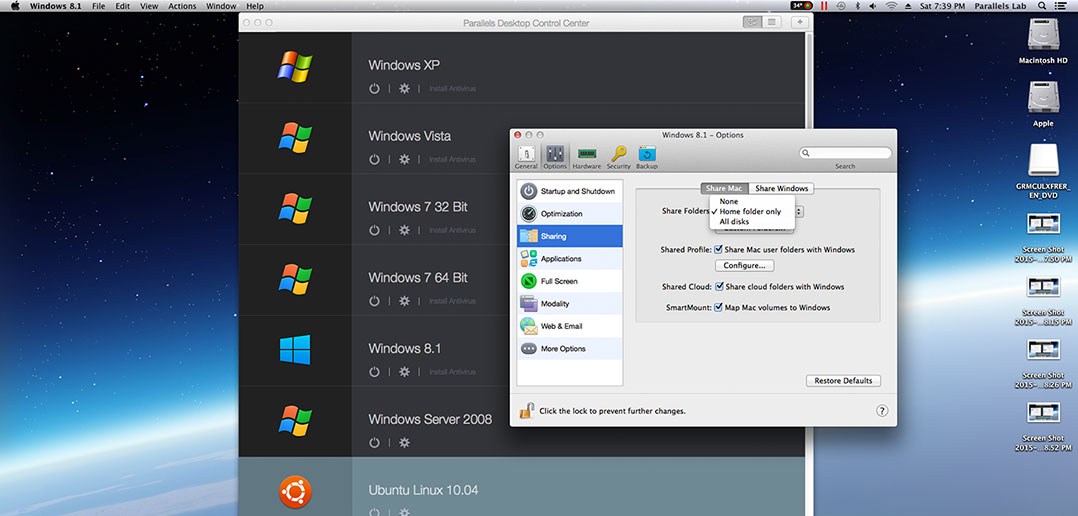

- #Parallels for mac shared network how to#
- #Parallels for mac shared network mac os x#
- #Parallels for mac shared network windows#
Note: Automatic mounting may be blocked by SELinux.
Shared folders will be automatically mounted to the / media/psf or /mnt/psf directory upon the virtual machine start. After you have created a shared folder, start your Linux virtual machine. Note: To be able to save files to a shared folder from inside the virtual machine, make sure that the Read-Only option is disabled. Double-clicking this shortcut will lead you to the \\.psf directory where all your shared folders are stored. #Parallels for mac shared network windows#
After you have created a shared folder, start your Windows virtual machine and you will see the Parallels Shared Folders shortcut on the Windows desktop.Viewing Shared Folders in Windows Guest OS Now you can start your virtual machine and view the shared folders in the guest OS.Click OK in the Virtual Machine Configuration dialog to save the changes and quit the dialog.Make sure the Enabled option is selected and click OK.
#Parallels for mac shared network mac os x#
You will be able to save files to this folder in Mac OS X only.
If you want to restrict writing to this folder from inside the guest OS, select the Read-Only option. Provide a description for the shared folder if needed in the Description field. Specify a name for the folder which will appear in your guest OS in the Name field. Specify a folder in the Mac OS X file system that will be shared in the Path field. The Add Shared Folder dialog will appear. Enable the User-defined folders option to be able to add shared folders to the list. In the Virtual Machine Configuration dialog, select the Shared Folders pane. clicking the Configure button on the toolbar of the virtual machine main window. choosing Configure from the Virtual Machine menu, or. Open the Virtual Machine Configuration dialog by:. Start Parallels Desktop and open a virtual machine. #Parallels for mac shared network how to#
For the instruction on how to do that, see Shared Folders Settings.
Add a shared folder(s) to your virtual machine configuration. See Installing Parallels Tools for detailed descriptions on how to do so in a particular guest OS. Make sure that Parallels Tools are installed in your guest OS. Setting up a shared folder requires two steps: See the list of supported guest operating systems. Linux operating systems supported by Parallels Desktop as guest OSs. Windows 2000, Windows Server 2003, Windows XP, and Windows Vista. Using shared folders is possible in the following guest operating systems: It means, that it occupies space on the hard disk of the computer or virtual machine it originally belongs to. In the operating system, where a shared folder resides, it appears as a usual folder, while in the virtual machine it is shared to, it appears as an object of the network neighborhood.Ī shared folder or volume resides on the computer (host computer or a virtual machine) to which it initially belongs. 
You can also share the virtual machine disk volumes with Mac OS X - they will be mounted on the Mac OS X Desktop. Such folders can be used for exchanging files between the primary OS (Mac OS X) and the virtual machine or between several virtual machines. Whenever I login to Ubuntu, my OS X folder /Users/dave/Music is available in Ubuntu as /home/dave/Music.A shared folder is a folder on your Mac that can be accessed from your virtual machine.

Sys.exit(main())I save this as ~/bin/mount_sshfs and change its permissions to be executable. Opts, args = getopt.getopt(argv, 'u', )Īrgv = ('/Users/dave/Pictures', '/home/dave/Pictures')] ('/Users/dave/Documents', '/home/dave/Documents'), Mount_points = [('/Users/dave/Music', '/home/dave/Music'),







 0 kommentar(er)
0 kommentar(er)
